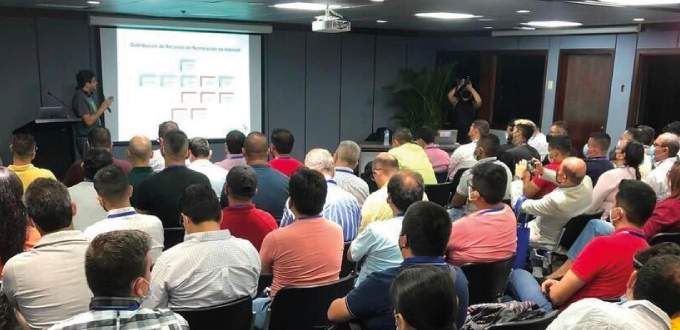A Look at the Course on IPv6 Offered at AndinaLink
30/03/2022

By Alejandro Acosta, R&D Coordinator at LACNIC
I recently had the chance to attend AndinaLink 2022, the International Telecommunications and Convergent Technologies Fair held in Colombia, as well as the honor of teaching the IPv6 workshop. This meeting was very special for several reasons.
First, AndinaLink 2020 was where we held our last face-to-face course that year (back-to-back with WISP MX) just before the pandemic. Now, it was the first in-person course we offered in 2022.
Second, attendance far exceeded our expectations: we expected fifty participants, and in the end, the room was at capacity with one hundred and twenty people were present in the room. Such was the success, that the meeting spilled over to another room — also at full capacity — and a Zoom session had to be added.
Finally, for the first time LACNIC included RouterOS (Mikrotik) in the course, which was offered by the organization’s staff.
What aspects of RouterOS did participants work on during the course?
The course began with some initial steps, such as verifying that equipment interfaces were working properly and that the IPv6 package had been installed. A lab was then built on GNS3 with three Mikrotik devices connected to each other (R1 — R2 — R3). In addition, IPv6 was configured in the different interfaces, static routes, loopback interfaces (bridge) and, finally, at the students’ request, BGP was configured and a few IPv6 prefixes were announced.
(Free access, no subscription required)
What is the relevance of this course and this event?
For many years, LACNIC has offered IPv6 courses throughout the region and at all our events. This, however, was the first time that a member of the LACNIC staff taught the course with Mikrotik equipment, which involved weeks of studying, setting up labs, and practices.
Audience feedback
The views expressed by the authors of this blog are their own and do not necessarily reflect the views of LACNIC.